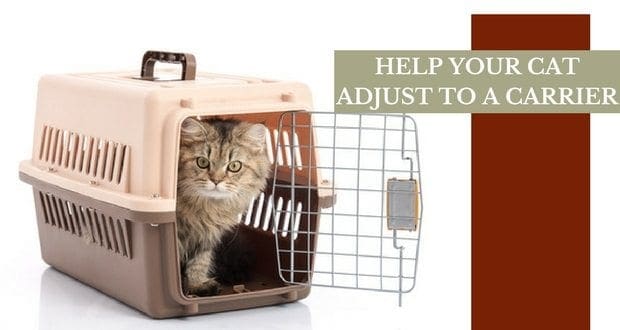
Do you have one of those cats who always knows when you’re planning a trip to the veterinarian’s office? Perhaps your cat even knows before you’ve taken the carrier down from the shelf? Before you have a chance to get the carrier off the shelf kitty has taken up residence under the bed. Is your cat psychic?
If You’re Nervous, it Makes Your Cat Nervous
In reality, your cat is actually picking up on very subtle signals from you. Your cat has highly-developed senses and she knows when you’re not acting in the usual manner. Your cat isn’t reading your mind – she’s reading your body language. If you tense up as you head for the closet to get the carrier because you’re gearing up for the inevitable battle about to take place, your cat is well aware of the fact you aren’t your normal, happy-go-lucky self. Your tense body language becomes a red flag that something bad is about to happen. Trying to put a stressed out cat into a carrier isn’t fun.
Change Your Cat’s Association with the Carrier
Much of the probplem stems from the fact the carrier only comes out when it’s time for that trip to the veterinary clinic. From the cat’s point of view NOTHING fun ever happens there. Make the appearance of the carrier a little less awful by not having it be exclusively associated with veterinary visits. Leave the carrier out all the time so it loses its fear factor. If you use a kennel-type carrier, take the door off, line the carrier with a towel, and leave it out as a cozy hideaway for your cat. Get some totally irresistible treats and periodically place a treat near the carrier. Every once in a while toss a treat closer and closer until you’re eventually placing the treat inside the carrier. You can even feed your cat meals near, on, and eventually inside the carrier.
Once your cat is comfortable with being in the carrier you can replace the door. In subsequent sessions, close the door when the cat is in the carrier, then immediately open the door again and offer a treat. Eventually work up to being able to close the carrier door, walk around the room with the carrier and then place it back down.
Next Step: Change Your Cat’s Association with the Car
The next step is to get the cat comfortable with being in the car. Put the cat in the carrier. Next, bring the carrier out to the car and place it inside. Don’t start the engine. Just let your cat adjust to being in the car for a few minutes. If your cat will accept them, offer a few treats. When your cat is comfortable with being in the car, your next training session involves starting the engine. When your cat is comfortable you can then take a short drive around the block and back home. Always keep things positive, casual and brief. Work your way up to taking longer drives.
Carrier Placement in Car
For car travel, place the carrier on the floor behind the passenger or driver’s seat. Don’t place the carrier in the front seat and don’t use a seatbelt to secure a carrier. According to the Center for Pet Safety, unless a manufacturer has supplied crash test video demonstrating structural integrity, a seatbelt can actually crush the carrier in an accident.
I come across so many people who never take their cats to the veterinarian simply because they dread the battle of trying to get an extremely unhappy cat into the carrier. Your cat’s annual vet check-up is extremely important and shouldn’t be missed because you dread the carrier war.
Keep the Carrier out and Ready at all Times
If you keep the carrier out all of the time, it will no longer be a frightening thing for your cat. It’ll also probably end up being a cozy little place for a nap. I always recommend that my clients keep the cat carrier out in case of an emergency. If your cat is injured or has a medical emergency, those extra seconds can make a difference so it’s good to have the carrier ready to go. There may also be an emergency where you have to evacuate the house in a hurry and that’s not the time you want to use up precious time searching for the carrier.
Need More Information?
For more information on behavior and training, refer to the best-selling books by Pam Johnson-Bennett. Pam’s books are available at bookstores and online. We’ve included Amazon links here on our website.
If you have a question regarding your cat’s health, please contact your veterinarian. This article is not intended as a replacement for your cat’s veterinary care.




